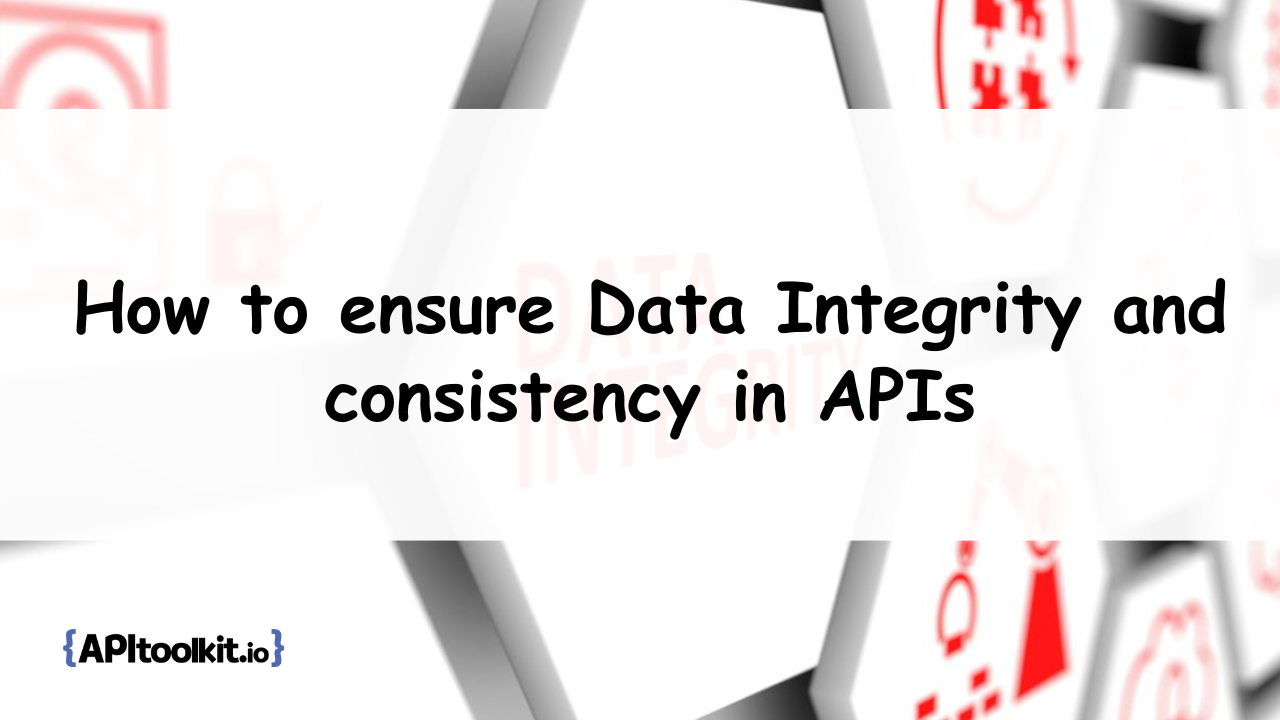How to ensure Data Integrity and consistency in APIs

APIs allow different software programs to share information smoothly. But if the data passed through APIs is incorrect, inconsistent, or corrupted, the integration between programs will break down. The smooth exchange of data that APIs promise can quickly turn into a glitchy mess. This article explores best practices for how you ensure complete, accurate, and consistent data flows through APIs.
What is Data Integrity and Consistency
Data integrity refers to the accuracy, reliability, and correctness of the data exchanged between interconnected systems. It is the bedrock that ensures the data retains its intended meaning throughout its lifecycle.
Data consistency, in this context, involves maintaining uniformity and coherence across distributed systems. It ensures that all connected components interpret information in the same way, preventing discrepancies that could disrupt operations.
The Consequences of Compromised Data Integrity
Compromised data integrity within APIs can lead to a domino effect of operational errors, misinformed decisions, and, in the worst-case scenario, security breaches. Picture a case study where a financial application processes inaccurate transaction data due to a lack of integrity checks or a healthcare system misinterpreting patient records, potentially leading to life-threatening errors. These examples underscore the urgency of implementing robust measures to safeguard data integrity in APIs.
Differences Data Validation from Data Verification
Data validation revolves around ensuring that the data adheres to predefined rules and structures. It includes checks for format, type, and business logic to guarantee data accuracy.
On the other hand, data verification focuses on confirming the accuracy and correctness of the data. This includes activities such as data cleansing, reconciliation, and profiling to identify and rectify inconsistencies.
Best Practices for Ensuring Data Integrity and Consistency
1. Data Validation
-
Schema Enforcement
Schemas, such as JSON Schema and OpenAPI, serve as the backbone for validating data format and structure in APIs. By defining a clear schema, APIs can ensure that the data exchanged adheres to a standardized format, minimizing unexpected errors.
-
Data Type Checks
Rigorous checks on data types, such as integers, strings, and dates, are essential. This practice prevents issues arising from incompatible data types, ensuring that the data meets the expected format.
-
Business Logic Validation
Implementing custom validation rules specific to business requirements ensures that the data not only conforms to technical specifications but also aligns with the unique needs of the application.
2. Data Verification
-
Data Cleansing
Identifying and correcting inaccurate or incomplete data is paramount. Techniques like outlier detection and normalization help clean the data before it undergoes further processing or storage.
-
Data Reconciliation
Comparing data across different sources helps identify inconsistencies. Automated reconciliation processes highlight disparities, enabling timely corrections and ensuring data consistency.
-
Data Profiling
Analyzing data characteristics and identifying anomalies through profiling tools allows for a deeper understanding of the data. This proactive approach aids in identifying potential issues before they impact operations.
-
Encryption and Securing Sensitive Data
Encrypting sensitive data at rest and in transit adds an extra layer of protection against unauthorized access. Strong encryption algorithms safeguard the confidentiality of data, reducing the risk of data breaches.
3. Versioning and Timestamps (Tracking Data Changes)
Tracking data changes through versioning and timestamps is essential for auditing purposes. This historical record helps trace the evolution of data and facilitates error analysis or compliance checks.
4. Error Handling and Logging
Implementing comprehensive error handling mechanisms and logging data errors facilitates quick identification and resolution of issues. Detailed logs provide valuable insights into the root causes of data discrepancies.
5. Monitoring and Alerting
Continuous monitoring of data quality and setting up alerts for potential issues ensures proactive identification of anomalies. This allows organizations to address problems swiftly, minimizing the impact on operations.
Tailoring Strategies for JSON and XML Data formats
Different data formats, such as JSON and XML, require specific considerations to ensure data integrity in APIs.
JSON- Leveraging JSON Schema for Validation
When dealing with JSON data, leveraging JSON Schema becomes crucial for validating the format and structure. This standardized approach ensures that JSON data adheres to predefined rules, enhancing data integrity.
XML- Employing XML Schema Definition (XSD)
For XML data, employing XML Schema Definition (XSD) serves a similar purpose, providing a standardized way to define the structure and content of XML documents.
Conclusion
The journey to ensuring data integrity and consistency in APIs is multifaceted. From rigorous validation to proactive verification and additional fortification practices, a holistic approach is essential. Schemas, data type checks, and business logic validation contribute to data integrity, while data cleansing, reconciliation, and profiling ensure consistency.
Additional Resources
For those eager to delve deeper into the realm of data integrity in APIs, the following resources provide valuable insights and tools for further exploration: